The AMD Radeon VII Review: An Unexpected Shot At The High-End
by Nate Oh on February 7, 2019 9:00 AM ESTRadeon VII & Radeon RX Vega 64 Clock-for-Clock Performance
With the variety of changes from the Vega 10 powered RX Vega 64 to the new Radeon VII and its Vega 20 GPU, we wanted to take a look at performance and compute while controlling for clockspeeds. In this way, we can peek at any substantial improvements or differences in pseudo-IPC. There's a couple caveats here; obviously, because the RX Vega 64 has 64 CUs while the Radeon VII has only 60 CUs, the comparison is already not exact. The other thing is that "IPC" is not the exact metric measured here, but more so how much graphics/compute work is done per clock cycle and how that might translate to performance. Isoclock GPU comparisons tend to be less useful when comparing across generations and architectures, as like in Vega designers often design to add pipeline stages to enable higher clockspeeds, but at the cost of reducing work done per cycle and usually also increasing latency.
For our purposes, the incremental nature of 2nd generation Vega allays some of those concerns, though unfortunately, Wattman was unable to downclock memory at this time, so we couldn't get a set of datapoints for when both cards are configured for comparable memory bandwidth. While the Vega GPU boost mechanics means there's not a static pinned clockspeed, both cards were set to 1500MHz, and both fluctuated from 1490 to 1500MHZ depending on workload. All combined, this means that these results should be taken as approximations and lacking granularity, but are useful in spotting significant increases or decreases. This also means that interpreting the results is trickier, but at a high level, if the Radeon VII outperforms the RX Vega 64 at a given non-memory bound workload, then we can assume meaningful 'work per cycle' enhancements relatively decoupled from CU count.
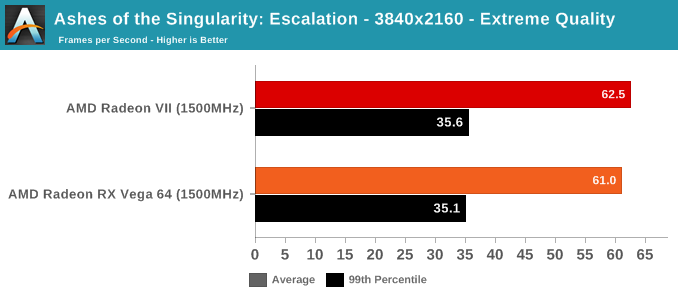
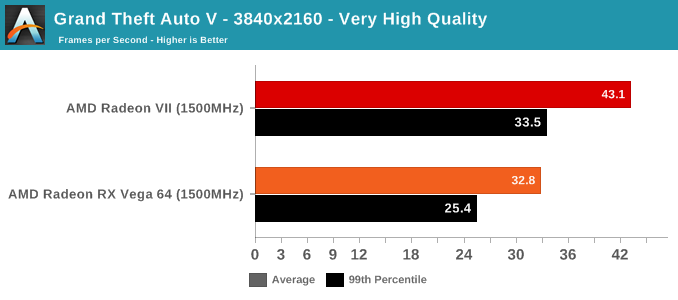

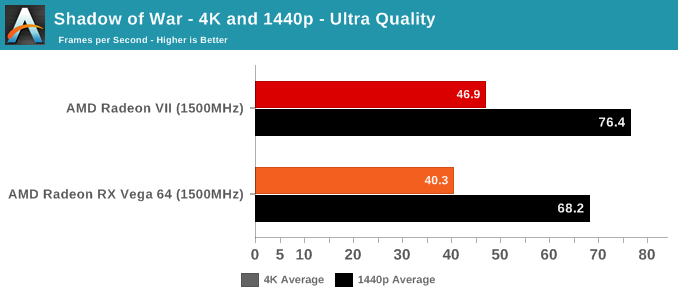
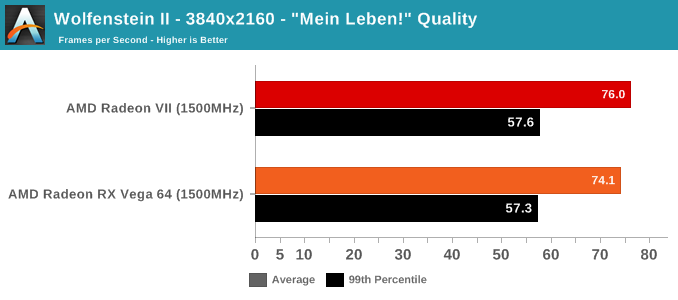
As mentioned above, we were not able to control for the doubled memory bandwidth. But in terms of gaming, the only unexpected result is with GTA V. As an outlier, it's less likely to be an indication of increased gaming 'work per cycle,' and more likely to be related to driver optimization and memory bandwidth increases. GTA V has historically been a title where AMD hardware don't reach the expected level of performance, so regardless there's been room for driver improvement.

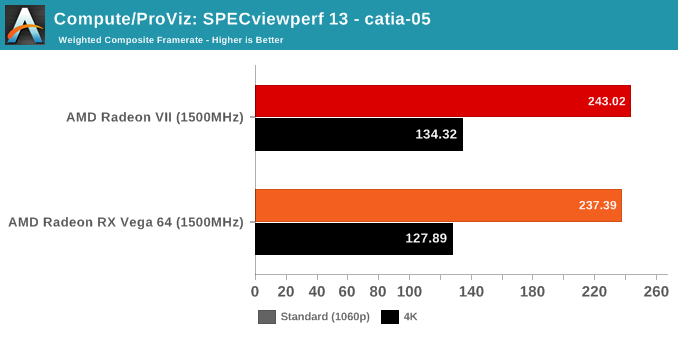
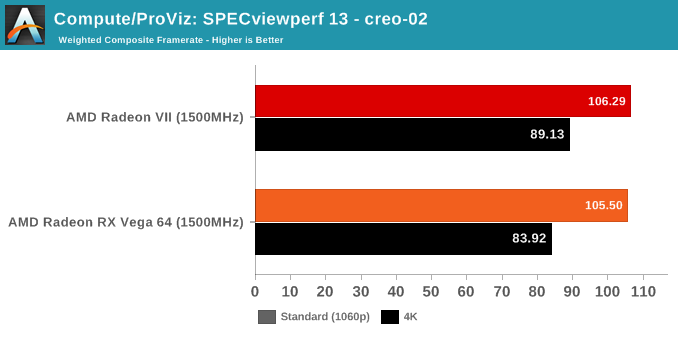
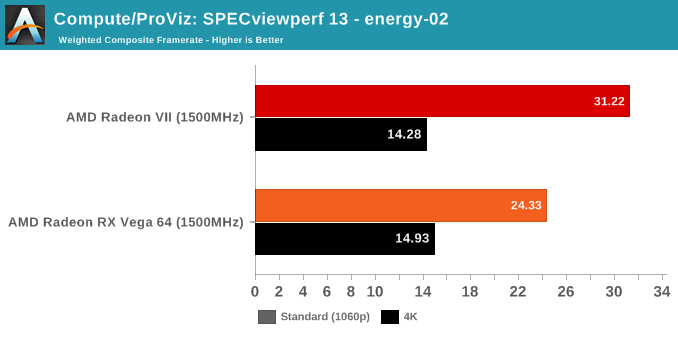
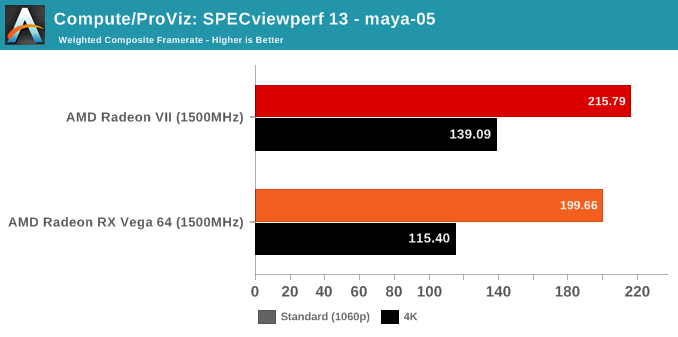
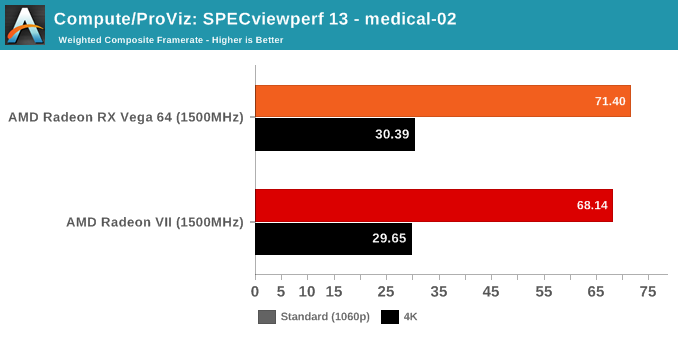


SPECviewperf is a slightly different story, though.

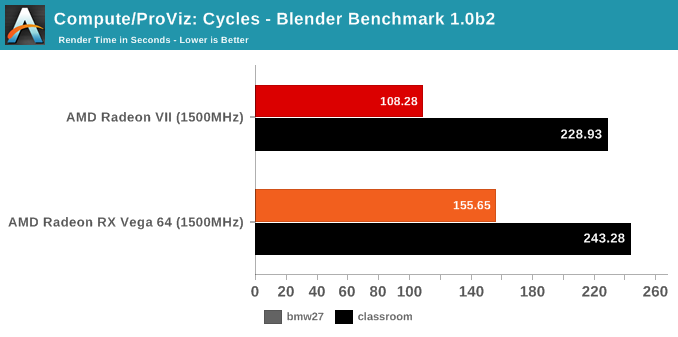
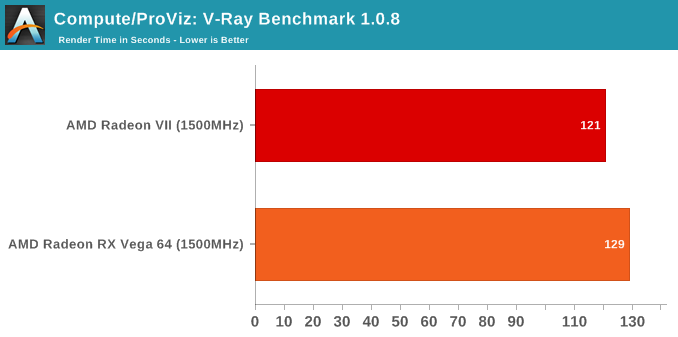
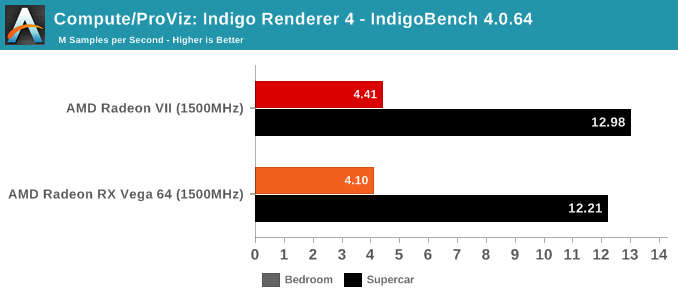










289 Comments
View All Comments
i4mt3hwin - Thursday, February 7, 2019 - link
So FP64 is 1:4 and not 1:8 or 1:2 as previously known?tipoo - Thursday, February 7, 2019 - link
Yep, looks like they changed the cap in vBIOS based on feedback.Which also means they could have uncapped it, but it's still cool that they did that.
Ganimoth - Thursday, February 7, 2019 - link
Does that mean it could be potentially unlocked by some bios mod?tipoo - Friday, February 8, 2019 - link
I hope so!Hul8 - Thursday, February 7, 2019 - link
I don't think it was ever reported or assumed to be 1/2 - that best possible ratio is only for the pro MI50 part. Early reports said 1/16.Ryan Smith - Thursday, February 7, 2019 - link
For what it's worth, when we first asked AMD about it back at CES, FP64 performance wasn't among the features they were even throttling/holding back on. So for a time, 1/2 was on the table.GreenReaper - Thursday, February 7, 2019 - link
So it was *your* fault! ;-pBigMamaInHouse - Thursday, February 7, 2019 - link
Asrock just posted vBios: is this with the FP 1:4 or newer?https://www.asrock.com/Graphics-Card/AMD/Phantom%2...
Ryan Smith - Thursday, February 7, 2019 - link
We're not currently aware of any Radeon VII cards shipping with anything other than 1/4 rate FP64.BigMamaInHouse - Friday, February 8, 2019 - link
So maybe it's new bios with some fixes?Did you tried it since all cards are the same reference design?